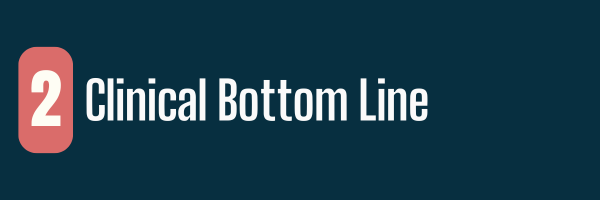Jun 13 • Sean Overin
AI Scribes & the Future of AI in Healthcare
This week I am deep-diving into “AI Scribes & the Future of AI in Healthcare” for an upcoming talk, so this week’s Five is a peek at the some of the research pitting AI against real-life clinicians and where we might be heading.
Spoiler: the generative AI is incredibly clever, but still misses important emotional cues and other unique human experiences that matter.
Let’s roll.

Here are three recent studies that push the limits of AI’s clinical chops—and reveal exactly where it still falls short. Sure, two of them are from 2024, which already feels a little outdated in AI years, but it’s what we’ve got.
Chances are, you’ve seen a few of these making the rounds.
In a simulated case study, physicians and ChatGPT-4 were asked to solve clinical reasoning problems using a structured rubric (R-IDEA). The AI actually scored slightly higher than both residents and attending physicians on reasoning quality—but there was a catch. ChatGPT was more likely to give confidently incorrect answers, revealing that while it can sound sharp, it still lacks true clinical judgment and caution.
Key 🔑 Point: Today, if we default to AI’s answers as truth, we’re in trouble. Anyone who’s used generative AI knows the feeling—it sounds confident, polished, and plausible. But start tugging at the thread, and the gaps quickly show. This is the Alice in Wonderland conundrum: fall too deep into the rabbit hole of AI’s confidence, and you risk being misled.
Use AI as a tool, not a truth-teller. Always question. Always verify.
💡 Goh et al. (2024, JAMA)
This randomized trial looked at how AI-generated “nudges” (short, evidence-based prompts) impacted physician decision-making. The nudges helped clinicians make better decisions in straightforward scenarios, like matching symptoms to textbook cases. But in more complex or emotionally layered cases, the doctors had to lean on their experience—AI just couldn’t account for the fuzziness and context that real-life patients bring.
Key 🔑 Point: Think of AI like a helpful colleague handing you a guideline at the right time—it’s great when the case fits the mold. But in messier situations you need your clinical radar. AI can support the process, but it can’t replace your gut, your context-sense, or your ability to read between the lines.
🎭 Hatch et al. (2025, PLOS ONE)
In a Turing-style test with over 800 participants, people were asked to distinguish between therapy responses written by licensed couples therapists and ChatGPT. Most couldn’t tell the difference—accuracy hovered just above chance (≈56% for therapist responses, 51% for ChatGPT). Even more surprising, participants rated ChatGPT’s responses as more strongly aligned with core therapeutic qualities like empathy, alliance-building, and cultural competence. The authors suggest this was due to ChatGPT’s longer, more positive, and linguistically rich responses—polished enough to sound like excellent therapy, despite the absence of true emotional understanding.
Key 🔑 Point: People are often willing to share deeply personal information with AI—a phenomenon known as digital disclosure. But in return, there’s no emotional resonance. No felt connection. No real human presence behind the words. And that’s the key gap: disclosure can happen, but sounding empathic isn’t the same as being empathic. Patients can feel the difference—eventually. Connection and meaning-making still require a human.

🧠 What the Research Tells Us?
✅ For Now
AI tools like ChatGPT are getting really good at structured reasoning, documentation, and even mimicking empathy—but they still miss the messy, human stuff: nuance, emotional subtext, uncertainty, and lived context (and this is even with an outstanding prompt). As clinicians, our job could be to use AI where it excels (speed, structure, standardization) and stay fully human where it matters most.
🔮 For the Future
The gap is narrowing. AI will continue to improve at adapting to context and variability—but empathy, trust-building, and knowing when not to act seem to still be deeply human skills. I think clinicians, teams and businesses who thrive in the future will be those who blend human wisdom with machine intelligence.
And ironically, by letting AI take over the documentation, data wrangling, pattern recognition and repetitive mental load, we have more time to do the thing that drew us to this work in the first place: caring for people. Used well, AI won’t remove the humanity from healthcare—it might just give us space to bring more of it in, with more precision, more nudges and more care that extends beyond a typical session.
- AI nails the structure, not the soul. It can reason (Cabral), nudge (Goh), and sound empathic (Hatch)—often matching or outperforming clinicians on form alone.
- But it struggles with humanness. AI misses nuance, emotion, and complexity. It’s confident—but not always correct. Warm—but not truly present.
- Use it as a co-pilot, not a clinician. Let AI handle the cognitive load so we can lean into what matters: connection, judgment, nuance and care that feels human.
- And let’s not forget: these studies are based on single-session, text-only interactions—not ongoing relationships, not real-time care. Real clinical care happens over time, face-to-face, with presence, trust, and context that no chatbot or robot can replicate (yet).
✅ For Now
AI tools like ChatGPT are getting really good at structured reasoning, documentation, and even mimicking empathy—but they still miss the messy, human stuff: nuance, emotional subtext, uncertainty, and lived context (and this is even with an outstanding prompt). As clinicians, our job could be to use AI where it excels (speed, structure, standardization) and stay fully human where it matters most.
🔮 For the Future
The gap is narrowing. AI will continue to improve at adapting to context and variability—but empathy, trust-building, and knowing when not to act seem to still be deeply human skills. I think clinicians, teams and businesses who thrive in the future will be those who blend human wisdom with machine intelligence.
And ironically, by letting AI take over the documentation, data wrangling, pattern recognition and repetitive mental load, we have more time to do the thing that drew us to this work in the first place: caring for people. Used well, AI won’t remove the humanity from healthcare—it might just give us space to bring more of it in, with more precision, more nudges and more care that extends beyond a typical session.

Here’s a story I keep coming back to:
An author uploaded his entire novel and research notes into ChatGPT and asked it to find the most meaningful moment.The AI chose the ending—where everything is resolved. Logical. Predictable. Technically correct.
But the author, and thousands of readers, chose something else:
A quiet scene where a grandmother gently braids her granddaughter’s hair.
They sit cross-legged on the floor. No words. The girl leans back, safe in the stillness. That was the heart of the story—and it flew right past the algorithm.
Clinically, we see this all the time.
A patient arrives with a “low-priority” symptom—nagging pain, a vague concern, an offhand comment that doesn’t fit the referral. But beneath it is something deeper: fear, grief, uncertainty—a quiet plea for help.
AI won’t catch that.
But you might.
And that moment—if you’re listening—is where n=1, personalized care begins.
An author uploaded his entire novel and research notes into ChatGPT and asked it to find the most meaningful moment.The AI chose the ending—where everything is resolved. Logical. Predictable. Technically correct.
But the author, and thousands of readers, chose something else:
A quiet scene where a grandmother gently braids her granddaughter’s hair.
They sit cross-legged on the floor. No words. The girl leans back, safe in the stillness. That was the heart of the story—and it flew right past the algorithm.
Clinically, we see this all the time.
A patient arrives with a “low-priority” symptom—nagging pain, a vague concern, an offhand comment that doesn’t fit the referral. But beneath it is something deeper: fear, grief, uncertainty—a quiet plea for help.
AI won’t catch that.
But you might.
And that moment—if you’re listening—is where n=1, personalized care begins.

The subtle sigh. The offhand comment. The long pause before answering. The way a patient glances away when talking about something “minor.”
Pay attention to the quiet moments.
These are often the emotional signal flares—the grandmother-and-granddaughter moments—that don’t show up in the chart or the AI Scribe transcript, but can shape the course of care.
This week, try this:
AI can help you be efficient. But only you can be present.
And if a blended model of care is coming—where AI handles the logic and we handle the meaning ... How do you want to show up in that future? What part of your clinical presence do you want to double down on?
Pay attention to the quiet moments.
These are often the emotional signal flares—the grandmother-and-granddaughter moments—that don’t show up in the chart or the AI Scribe transcript, but can shape the course of care.
This week, try this:
- Ask one more curious question when something feels slightly off.
- Pause a beat longer after a patient finishes speaking.
- Listen for what’s not being said—because sometimes, that’s the real story.
AI can help you be efficient. But only you can be present.
And if a blended model of care is coming—where AI handles the logic and we handle the meaning ... How do you want to show up in that future? What part of your clinical presence do you want to double down on?

“AI can catch what’s clear. Clinicians catch what’s quiet.”
Across the studies we explored—whether it was ChatGPT scoring as well as doctors on structured clinical reasoning, nudging decision-making without fully understanding nuance, or writing therapy responses that sounded more empathetic than actual therapists—a consistent theme emerged:
AI is excellent at clarity.
It sees patterns, follows logic, and mimics emotional tone with startling fluency.
But it struggles with subtlety.
It doesn’t feel discomfort in the room. It doesn’t notice the tear held back. It doesn’t ask, “Is there something else on your mind?”
I think the future of care isn’t a choice between AI or humans. It’s a blended model.
That’s the work. That’s the new art.
Across the studies we explored—whether it was ChatGPT scoring as well as doctors on structured clinical reasoning, nudging decision-making without fully understanding nuance, or writing therapy responses that sounded more empathetic than actual therapists—a consistent theme emerged:
AI is excellent at clarity.
It sees patterns, follows logic, and mimics emotional tone with startling fluency.
But it struggles with subtlety.
It doesn’t feel discomfort in the room. It doesn’t notice the tear held back. It doesn’t ask, “Is there something else on your mind?”
I think the future of care isn’t a choice between AI or humans. It’s a blended model.
That’s the work. That’s the new art.
As tech continues to progress—and it undoubtedly will—let’s keep showing up with full hearts, sharp minds, and a commitment to care that no machine can mimic.
Let’s learn the risks and how to work with AI. This is a trend that is here to stay. Use it to think faster, make better decisions, document better, and stay organized—so we can do what only humans can: build trust, sit with uncertainty, and connect in the quiet moments that matter most.
Let’s learn the risks and how to work with AI. This is a trend that is here to stay. Use it to think faster, make better decisions, document better, and stay organized—so we can do what only humans can: build trust, sit with uncertainty, and connect in the quiet moments that matter most.
Stay nerdy,
Sean Overin, PT
Subscribe to our newsletter
Every Friday we cover must read studies, how they fit in practice, give it real world context, provide top resources and one sticky idea.
Thank you!
You have successfully joined our Friday 5 Newsletter subscriber list.
